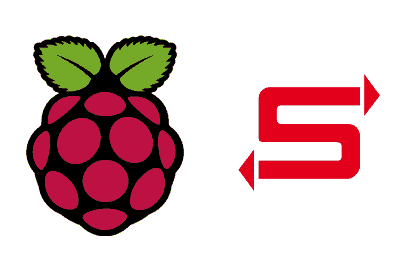Let’s see how you can configure your Raspberry Pi as a file server using Samba, so that other Windows computers on the same network can access the shared files.
Samba is a software suite that provides file and print sharing services for Unix/Linux operating systems, using the SMB/CIFS protocol.
SMB/CIFS (Server Message Block/Common Internet File System) is the protocol that Windows uses to share files, printers, and other resources on a network.
Some of the main features of Samba are:
- Interoperability: Allows Unix/Linux systems to share files with Windows machines.
- Active Directory Compatibility: Can integrate into Active Directory domains.
- Security: Supports authentication and granular access control.
- Configurability: Highly configurable to adapt to various network needs.
Installing Samba on Raspberry Pi
Before installing Samba, it’s recommended to update the operating system to ensure you have the latest versions of all packages. Open a terminal and run:
sudo apt update sudo apt upgrade
Now, install Samba and its related utilities with the following command:
sudo apt install samba samba-common-bin
You can verify that Samba has been installed correctly by checking its version:
smbd —version
You should see the version of Samba that has been installed.
Configuring Samba
Once installed, you need to configure Samba to share files on your local network. The first step is to create a directory you want to share on your network.
For example, you can create a directory called shared in your home directory:
mkdir ~/shared
Now we need to configure Samba to share the directory. Edit the Samba configuration file, smb.conf, to add your new shared resource:
sudo nano /etc/samba/smb.conf
Add the following lines to the end of the file to configure the shared resource:
[shared]
path = /home/pi/shared
available = yes
valid users = pi
read only = no
browsable = yes
public = yes
writable = yes
These options configure the shared resource:
- path: The path of the directory to share.
- available: Indicates if the resource is available.
- valid users: Specifies which users can access the resource.
- read only: Allows or disallows writing to the resource.
- browsable: Makes the resource visible on the network.
- public: Allows access without authentication.
- writable: Allows writing to the resource.
Now we need to create a Samba user to access the shared resource. You can use the pi user, or create a new one:
sudo smbpasswd -a pi
It will ask you to enter and confirm a password for the Samba user.
Finally, to apply the changes, we restart the Samba service:
sudo systemctl restart smbd sudo systemctl restart nmbd
Connecting to the Shared Folder
To access the shared resource from a Windows machine:
- Open File Explorer.
- In the address bar, type
\\raspberrypi\sharedor\\<IP of your Raspberry Pi>\shared. - Enter the Samba user credentials (e.g.,
piand the password you configured).
To access the shared resource from a Linux machine:
- Open your file manager.
- In the address bar, type
smb://raspberrypi/sharedorsmb://<IP of your Raspberry Pi>/shared. - Enter the Samba user credentials.

